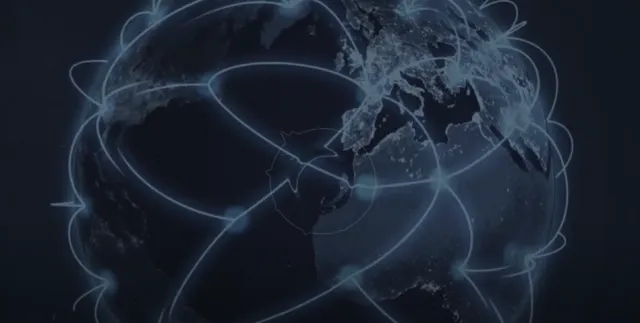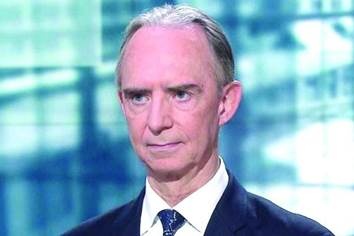
25 years GCSP: Towards an Evidence-Based Arms Control and Disarmament - Episode 1
25 years GCSP: Towards an Evidence-Based Arms Control and Disarmament - Introduction
Towards an Evidence-Based Arms Control and Disarmament - Episode 1
Ashley Muller: Welcome to episode 1 of this mini-series on arms control and disarmament. I’m your host Ashley Müller with the Geneva Centre for Security Policy and in this episode, we will look at an overview of arms control & disarmament and data for arms control and disarmament verification with Marc Finaud, Head of Arms Proliferation at the GCSP.
Ashley Muller: Marc, You have experience in arms control and disarmament negotiations. How can you briefly summarise the existing international architecture dealing with these issues?
Marc Finaud: For the Weapons of Mass Destruction let’s talk first about nuclear weapons, there are three main multilateral instruments:
The Non-Proliferation Treaty (NPT) that entered into force in 1970 which recognises five nuclear-weapon states (China, France, Russia, the UK and the US), which agreed not to transfer nuclear weapons but also agree to eliminate their weapons eventually, and the non-nuclear-weapon states, agree not to acquire nuclear weapons in exchange for nuclear disarmament but also cooperation in peaceful uses of nuclear energy and there is an agency monitoring compliance with these commitments by the non-nuclear weapons state which is the The International Atomic Energy Agency (IAEA) in Vienna.
Then there is the Comprehensive Test Ban Treaty (CTBT), adopted in 1996 but still not in force because it lacks the ratification by a number of nuclear and non-nuclear states. But it has an organisation, the CTBTO, also based in Vienna, which monitors compliance with the Treaty. And finally there is a most recent instrument, The Treaty on the Prohibition of Nuclear Weapons, adopted in 2017, that should enter into force soon after 50 ratifications. In addition there are nuclear-weapon free zones throughout the world in the Antarctic, Latin America, Africa, Southeast Asia, South-Pacific and Central Asia
For biological and chemical weapons, there used to be the Geneva Protocol of 1925 which banned the use of these weapons in war only, but then there was the 1972 Biological and Toxin Weapons Convention that prohibited those weapons altogether and the Chemical Weapons Convention in 1993 that also prohibited chemical weapons and that has a verification regime monitored by the Organisation for the Prohibition of Chemical Weapons – OPCW based in The Hague.
Now if we talk about conventional weapons, that means all the rest, there are a number of instruments as well. There was a regional approach in Europe, after the Cold War, with the Treaty on Conventional Arms Forces in Europe (CFE) that led to massive disarmament, and a series of documents on confidence- and security-building measures within the OSCE (Organisation for Security and Cooperation in Europe), but these instruments are now challenged by new tensions in Europe. At a global level, there are instruments such as the 2001 UN Programme of Action on Illicit Trafficking in Small Arms and Light Weapons (PoA), there is the Firearms Protocol, the International Tracing Instrument, and more recently the Arms Trade Treaty (ATT), that regulates trade in conventional armaments. To this you can add the Convention on Certain Conventional (or Inhumane) Weapons (CCW) with five additional protocols, the Antipersonnel Landmine Ban Treaty, the Cluster Munitions Convention, and the Hague Code of Conduct against Ballistic Missile Proliferation. Now for WMD there are a number of export control regimes or non-proliferation regimes such as the Nuclear Suppliers Group or the Australia Group, and for conventional weapons, there is the Wassenaar Arrangement, and the Missile Technology Control Regime (MTCR).
Ashley Muller: Among the international instruments that you mentioned dealing with various categories of weapons, many require either exchanges of information among the states parties or collection and processing of data to verify compliance with their commitments. Can you give examples of such cases and the difficulties they may encounter?
Marc Finaud: In the first category, one may include the reporting obligations in some instruments about the implementation of commitments. For instance, in the UN Programme of Action on Small Arms and Light Weapons, all UN Member States are required to report regularly on what they do to implement their commitment. Now in practice, they do it every two years, which is good enough, some do it less and some don’t even report anything, which is a worry. In the Arms Trade Treaty, there are legal obligations first to report once, the initial report on the measures taken to implement the Treaty, and then every year an annual report on exports and imports. Now it was revealed by the Secretariat of the Arms Trade Treaty at the last Conference of States Parties that 24% of states parties still had not sent their initial reports while the Treaty has been in force already for 6 years, and out of those that sent their reports, the annual report, only 47% had sent them in time, and so then there is this declining trend and also an increasing trend on the number of reports that are not made public, that are kept confidential. This is a worrying trend for the sake of transparency which does not allow parliaments or civil society to exercise their oversight.
In the other category, in terms of data verification of arms control and disarmament agreements, of course when this is mandated to international organisations, those organisations require to collect data either from the states parties, the Member States, or from other sources including their own investigations or on-site inspections. This is the case for the IAEA, which monitors nuclear safeguards, the OPCW for chemical weapons, or the CTBTO for nuclear testing. For instance, there was the case when the IAEA, because it lacked this information, this data, was not able to detect the Iraqi secret nuclear weapons programme. Based on that experience, a new instrument was developed called the additional Protocol allowing the Agency to inspect even undeclared activities and facilities. If you take the case of biological weapons, there is no organisation, there is actually no verification regime for the Convention, so if a state was a victim of attack by biological weapons, the only solution left would be to require the Secretary-General of the United Nations to conduct an investigation, a fact-finding mission and of course for this their is a roster of experts that could assist the Secretary-General. If you take the bilateral treaty between the US and Russia, the New START treaty, it includes extensive exchanges of data and on-site inspections. The treaty has been enforced for 10 years, over this period over 20,000 data exchanges and inspections have taken place. And the question now is if this treaty will be extended or replaced with another one, and if it’s not, then there is a major loss of mutual information and mutual confidence that the treaty has complied with.
In all these cases, the main challenges are: transparency vis-à-vis the public but also restricted with relevant states; accuracy of data; timely transmission; and processing in case of suspicion of non-compliance with the treaties.
Ms Ashley Müller: That’s all we have now for this episode. Thank you to Marc Finaud for joining us for this mini-series. Click the next button to listen to Episode 2 where we discuss the role of Parliaments in arms control and disarmament. In the meantime, don’t forget to follow us Spotify or iTunes or subscribe to us on your favourite podcast player and follow us across all of our social media channels.
Click the next button to get to the next episode!
Disclaimer: The views, information and opinions expressed in this digital product are the authors’ own and do not necessarily reflect those shared by the Geneva Centre for Security Policy or its employees. The GCSP is not responsible for and may not always verify the accuracy of the information contained in the digital products.

